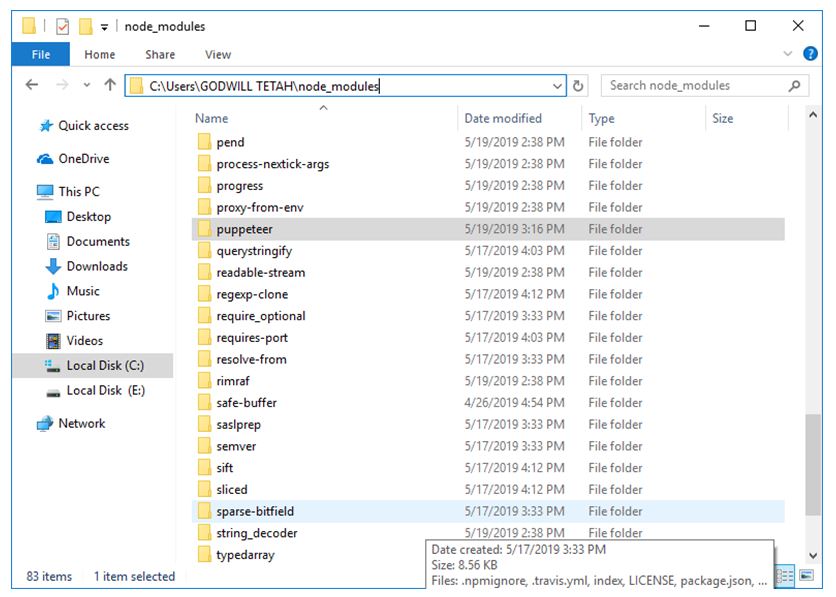

You should find Puppeteer executes successfully, provided proper Chrome flags are used. Chrome will write into /tmp instead.Īdd your JavaScript to your container with a COPY instruction. disable-dev-shm-usage – This flag is necessary to avoid running into issues with Docker’s default low shared memory space of 64MB.If you’re uncomfortable with this, you’ll need to manually configure working Chrome sandboxing, which is a more involved process. It’s vital you ensure your Docker containers are strongly isolated from your host. Using these flags could allow malicious web content to escape the browser process and compromise the host. There are 418 other projects in the npm registry using puppeteer-extra-plugin-stealth. Start using puppeteer-extra-plugin-stealth in your project by running npm i puppeteer-extra-plugin-stealth. npm install puppeteer Or, npm i puppeteer Step 6 For installation of Puppeteer core, run the below mentioned command npm i puppeteer-core Step 7 After the installation of Puppeteer and Puppeteer core, we shall find the nodemodules folder and package.json file generated within the empty folder we created in Step 2. Latest version: 2.11.2, last published: 3 months ago. no-sandbox and disable-setuid-sandbox – These disable Chrome’s sandboxing, a step which is required when running as the root user (the default in a Docker container). Stealth mode: Applies various techniques to make detection of headless puppeteer harder.Setting this flag explicitly instructs Chrome not to try and use GPU-based rendering.


disable-gpu – The GPU isn’t usually available inside a Docker container, unless you’ve specially configured the host.


 0 kommentar(er)
0 kommentar(er)
